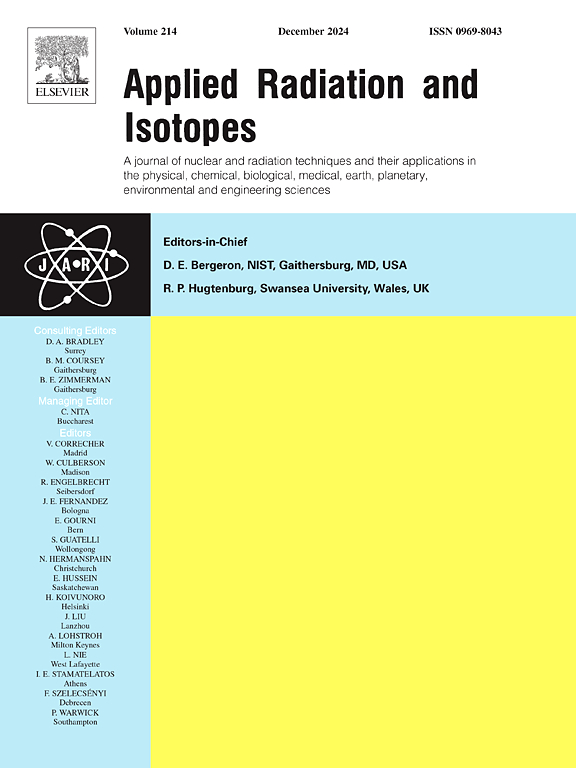Fully automated synthesis of [18F]fluorocholine on GE FASTlab II synthesizer
IF 1.6
3区 工程技术
Q3 CHEMISTRY, INORGANIC & NUCLEAR
引用次数: 0
Abstract
A reliable and fully automated method for synthesis, purification and formulation of [18F]FCH on the GE FASTlab II utilizing a single-use cassette was reported. The radiosynthesis sequences of [18F]FCH was written based on the two-step, gas phase synthesis methodology. Dibromomethane (DBM) was fluorinated with no-carrier-added [18F]fluoride ion, assisted by K222/K2CO3, to afford [18F]fluorobromomethane ([18F]FBM) as a gas. [18F]FCH was then prepared by bubbling [18F]FBM through Sep-Pak Silica cartridges to react with dimethylethanolamine (DMAE) preloaded on Sep-Pak C18 cartridge. The resulting [18F]FCH was purified using Sep-Pak C18 and Accell CM cartridges in series. The purified [18F]FCH was eluted from the CM cartridge and formulated with 0.9 % sodium chloride for injection. With this method, the radiochemical yield of [18F]FCH was 17.8 ± 2.5 % with a high radiochemical purity (>99 %). Three consecutive [18F]FCH validation runs were performed, and all quality control parameters met the release criteria for human use. This method is quite straightforward utilizing single-use cassettes. [18F]FCH was reproducibly produced at sufficiently high radioactive concentration for multiple preclinical or human imaging doses from a single radiosynthesis.
求助全文
约1分钟内获得全文
求助全文
来源期刊

Applied Radiation and Isotopes
工程技术-核科学技术
CiteScore
3.00
自引率
12.50%
发文量
406
审稿时长
13.5 months
期刊介绍:
Applied Radiation and Isotopes provides a high quality medium for the publication of substantial, original and scientific and technological papers on the development and peaceful application of nuclear, radiation and radionuclide techniques in chemistry, physics, biochemistry, biology, medicine, security, engineering and in the earth, planetary and environmental sciences, all including dosimetry. Nuclear techniques are defined in the broadest sense and both experimental and theoretical papers are welcome. They include the development and use of α- and β-particles, X-rays and γ-rays, neutrons and other nuclear particles and radiations from all sources, including radionuclides, synchrotron sources, cyclotrons and reactors and from the natural environment.
The journal aims to publish papers with significance to an international audience, containing substantial novelty and scientific impact. The Editors reserve the rights to reject, with or without external review, papers that do not meet these criteria.
Papers dealing with radiation processing, i.e., where radiation is used to bring about a biological, chemical or physical change in a material, should be directed to our sister journal Radiation Physics and Chemistry.
 求助内容:
求助内容: 应助结果提醒方式:
应助结果提醒方式:


